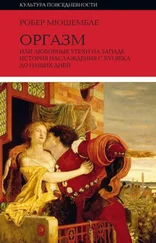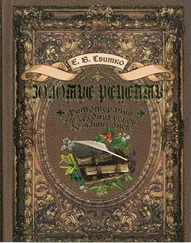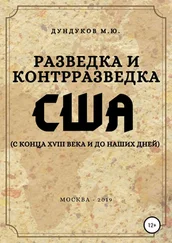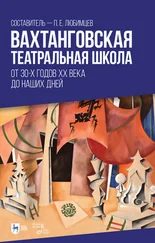Frith, U. Autism: Explaining the Enigma. Oxford: Blackwell Publishing, 1989.
Gage, J. Color in Art. London: Thames and Hudson, 2006.
Hughes, R. The Shock of the New: Art and the Century of Change. 2 nded. London: Thames and Hudson, 1991.
Javal, E. Physiologie de la Lecture et de l’Écriture . Paris: Felix Alcan, 1906.
Langton, S. R. H., Watt, R. J., and V. Bruce Do the eyes have it? Cues to the direction of social attention // Trends in Cognitive Science 4 (2000): 50–59.
Livingstone, M. Vision and Art: The Biology of Seeing. New York: Harry N. Abrams, 2002.
Livingstone, M., and D. Hubel Segregation of form, color, movement, and depth: Anatomy, physiology, and perception // Science 240 (1988): 740–749.
Lotto, R. B., and D. Purves Perceiving color // Review of Progress in Coloration 34 (2004): 12–25.
Marks, W. B., Dobelle, W. H., and E. F. MacNichol Visual pigments of single primate cones // Science 13 (1964): 1181–1182.
Molnar, F. About the role of visual exploration in aesthetics / In: Advances in Intrinsic Motivation and Aesthetics. H. Day, ed. New York: Plenum, 1981.
Natter, T. G., ed. Oskar Kokoschka: Early Portraits from Vienna and Berlin, 1909–1914. Köln: Dumont Buchverlag, 2002.
Nodine, C. F., Locher, P. J., and E. A. Krupinski The role of formal art training on perception and aesthetic judgment of art compositions // Leonardo 26 (3) 1993: 219–227.
Pelphrey, K. A., Morris, J. P., and G. McCarthy Grasping the intentions of others: The perceived intentionality of an action influences activity in the superior temporal sulcus during social perception // Journal of Cognitive Neuroscience 16 (10) 2004: 1706–1716.
Pirenne, M. H. Rods and cones and Thomas Young’s theory of color vision // Nature 154 (1944): 741–742.
Puce, A., Allison, T., Bentin, S., Gore, J. C., and G. McCarthy Temporal cortex activation in humans viewing eye and mouth movements // Journal of Neuroscience 18 (1998): 2188–2199.
Sacco, T., and B. Sacchetti Role of secondary sensory cortices in emotional memory storage and retrieval in rats // Science 329 (2010): 649–656.
Simpson, K. Viennese art, ugliness, and the Vienna School of Art History: The vicissitudes of theory and practice // Journal of Art Historiography 3 (2010): 1–14.
Slaughter, V., and M. Heron Origins and early development of human body knowledge // Monographs of the Society for Research in Child Development 69 (2) 2004: 103–113.
Solso, R. L. Cognition and the Visual Arts. Cambridge, MA: MIT Press, Bradford Books, 1994.
Zeki, S. Splendors and Miseries of the Brain. Oxford: Wiley-Blackwell, 2008.
Глава 21. Бессознательные эмоции, сознательные чувства и их телесные проявления
Adolphs, R., Tranel, D., and A. R. Damasio Impaired recognition of emotion in facial expression, following bilateral damage to the human amygdala // Nature 372 (1994): 669–672.
Adolphs, R., Gosselin, F., Buchanan, T. W., Tranel, D., Schyns, P., and A. Damasio A mechanism for impaired fear recognition after amygdala damage // Nature 433 (2005): 68–72.
Anderson, A. K., and E. A. Phelps Expression without recognition: Contributions of the human amygdala to emotional communication // Psychological Science 11 (2) 2000: 106–111.
Arnold, M. B. Emotion and Personality. New York: Columbia University Press, 1960.
Barzun, J. A Stroll with James. Chicago: University of Chicago Press, 2002.
Boring, E. G. A History of Experimental Psychology. New York: Appleton-Century-Crofts, 1950.
Bradley, M. M., Greenwald, M. K., Petry, M. C., and P. J. Lang Remembering pictures: Pleasure and arousal in memory // Journal of Experimental Psychology: Learning, Memory, and Cognition 18 (1992): 379–390.
Cannon, W. B. Bodily Changes in Pain, Hunger, Fear, and Rage: An Account of Recent Researches into the Function of Emotional Excitement. New York: D. Appleton & Co., 1915.
Cardinal, R. N., Parkinson, J. A., Hall, J., and B. J. Everitt Emotion and motivation: The role of the amygdala, ventral striatum, and prefrontal cortex // Neuroscience and Biobehavioral Reviews 26 (2002): 321–352.
Craig, A. D. How do you feel – now? The anterior insula and human awareness // National Review of Neuroscience 10 (1) 2009: 59–70.
Critchley, H. D., Wiens, S., Rotshtein, P., Öhman, A., and R. J. Dolan Neural systems supporting interoceptive awareness // Nature Neuroscience 7 (2004): 189–195.
Damasio, A. Descartes’ Error: Emotion, Reason, and the Human Brain. New York: G. P. Putnam’s Sons, 1994.
Damasio, A. The somatic marker hypothesis and the possible functions of the prefrontal cortex // Proceedings of the Royal Society of London B 351 (1996): 1413–1420.
Damasio, A. The Feeling of What Happens: Body and Emotion in the Making of Consciousness. New York: Harcourt Brace, 1999.
Darwin, C. The Expression of the Emotions in Man and Animals. London: John Murray, 1872.
Etkin, A., Klemenhagen, K. C., Dudman, J. T., Rogan, M. T., Hen, R., Kandel, E., and J. Hirsch Individual differences in trait anxiety predict the response of the basolateral amygdala to unconsciously processed fearful faces // Neuron 44 (2004): 1043–1055.
Freud, S. The Unconscious. London: Penguin Books, 1915.
Frijda, N. H. Emotion experience // Cognition and Attention 19 (2005): 473–498.
Frith, C. Making Up the Mind: How the Brain Creates Our Mental World. Malden, MA: Blackwell Publishing, 2007.
Harrison, N. A., Gray, M. A., Gienoros, P. S., and H. D. Critchley The embodiment of emotional feeling in the brain // Journal of Neuroscience 30 (38) 2010: 12878–12884.
Iverson, S., Kupfermann, I., and E. R. Kandel Emotional States and Feelings / In: Principles of Neural Science . 4 thed. E. R. Kandel, J. H. Schwartz, T. Jessell, eds. New York: McGraw-Hill, 2000. Pp. 982–997.
James, W. What is an emotion? // Mind 9 (1884): 188–205.
James, W. Principles of Psychology. Vols. 1, 2. Mineola, NY: Dover Publications, 1890.
Kandel, E. In Search of Memory. The Emergence of a New Science of Mind. New York: W. W. Norton, 2006.
Klüver, H., and P. C. Bucy Preliminary analysis of functions of the temporal lobes in monkeys // Archives of Neurology and Psychiatry 42 (6) 1939: 979–1000.
Knutson, B., Delgado, M., and P. Phillips Representation of Subjective Value in the Striatum / In: Neuroeconomics: Decision Making and the Brain . P. Glimcher, C. Camerer, E. Fehr, R. Poldrack, eds. London: Academic Press, 2008. Ch. 25.
Lang, P. J. The varieties of emotional experience: A meditation on James-Lange theory // Psychological Review 101 (1994): 211–221.
LeDoux, J. The Emotional Brain: The Mysterious Underpinning of Emotional Life. New York: Simon and Schuster, 1996.
Miller, E. K., and J. D. Cohen An integrative theory of prefrontal cortex function // Annual Review of Neuroscience 24 (2001): 167–202.
Oatley, K. Emotions: A Brief History. Oxford: Blackwell Publishing, 2004.
Phelps, E. A. Emotion and cognition: Insights from studies of the human amygdale // Annual Review of Psychology 57 (2006): 27–53.
Rokitansky, C. von Handbuch der pathologischen Anatomie. Braumüller & Seidel, 1846.
Rolls, E. T. Emotion Explained. New York: Oxford University Press, 2005.
Читать дальше
Конец ознакомительного отрывка
Купить книгу







![Франк Трентманн - Эволюция потребления [Как спрос формирует предложение с XV века до наших дней]](/books/403210/frank-trentmann-evolyuciya-potrebleniya-kak-spros-fo-thumb.webp)




